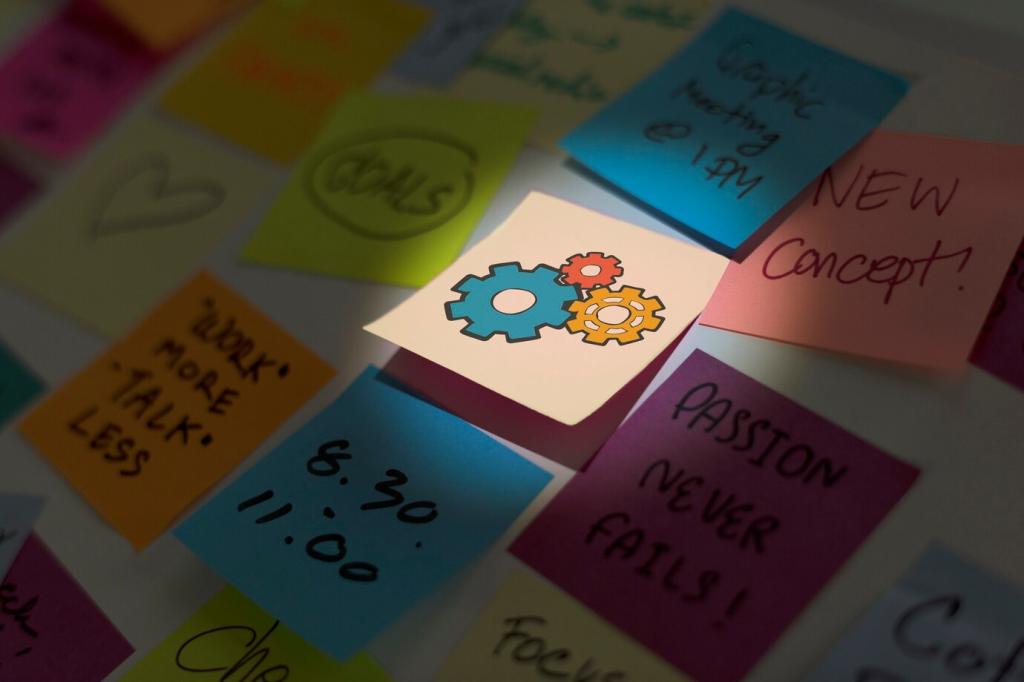
Open vs. Closed Office Layouts: Which is More Efficient?
Today’s chosen theme: Open vs. Closed Office Layouts: Which is More Efficient? Explore stories, data, and practical tips to help your team work better, feel better, and collaborate smarter. Share your thoughts and subscribe for future deep dives.


Defining Efficiency Beyond Buzzwords
Real productivity includes error rates, cycle time, handoff clarity, and the energy people still have at day’s end. Tell us which metric your team values most today and why it drives your layout decisions.
Defining Efficiency Beyond Buzzwords
Open layouts often boost spontaneous collaboration but can interrupt deep work. Closed layouts protect focus yet may slow quick alignment. Which pain costs you more: distractions or coordination delays? Comment with your experiences and how you balance the trade-off.
Noise, Focus, and Cognitive Load
Open offices often hover around conversational noise levels, which can steadily erode concentration. Acoustic zoning, soft surfaces, and ceiling baffles reduce cognitive load. Have you measured noise at your busiest hour? Share your reading and what changed after interventions.

Collaboration Without Chaos
Serendipity in Open Spaces
Open layouts can spark quick check-ins and spontaneous brainstorming, especially near shared resources like whiteboards and coffee points. Where do your best micro-collaborations happen? Map those hotspots and amplify them deliberately, rather than leaving them to chance.
Structured Collaboration in Closed Zones
Closed rooms support sensitive conversations, complex planning, and retros where psychological safety matters. Clear booking norms prevent calendar chaos. Would a daily collaboration window reduce interruptions elsewhere? Invite your team to test and report back results.
Hybrid Neighborhoods
Some teams cluster open collaboration tables beside quiet rooms, shifting modes without long walks. This reduces friction and preserves momentum. Try designating zones by work mode, then ask colleagues to vote on the clarity of your signage and etiquette.


Utilization Beats Density
An open plan can pack more seats, but empty desks do not equal efficiency. Measure peak and average occupancy, then right-size. Share your utilization insights: where are seats always full, and where does space quietly gather dust?
Reconfiguration Without Renovation
Movable partitions, modular furniture, and mobile whiteboards let layouts shift with projects. Closed offices can adopt glass fronts and demountable walls for agility. What’s your quickest reconfiguration story? Inspire others with a before-and-after snapshot.
Budgeting for What Matters
Acoustics and ergonomics often pay back faster than fancy décor. Prioritize outcomes: fewer errors, faster cycles, happier people. If you had one investment this quarter, would you choose focus pods, better chairs, or acoustic upgrades? Vote and explain your pick.
Wellbeing, Privacy, and Trust
Closed rooms protect sensitive work: performance reviews, financial models, and health conversations. Open plans still need private nooks. How do people book privacy without stigma? Share etiquette tips that make confidentiality normal and easy.
Technology and Acoustics That Change the Game
Ceiling clouds, wall panels, and fabric dividers cut reverberation without visually shrinking space. White noise can mask chatter when used carefully. Which acoustic tweak delivered the biggest change per dollar for your team? Share your quick wins.


Technology and Acoustics That Change the Game
Room displays, status lights, and desk booking systems reduce friction and awkward interruptions. Open areas benefit from visible norms for calls. What naming scheme helps people choose spaces faster? Post your most intuitive labels and why they stick.


When Open Wins, When Closed Wins
Sales floors, support teams, and early-stage brainstorms often excel in open areas with quick handoffs and visible energy. If speed and spontaneity rule, invest in clear sound zones and standing collaboration to keep momentum high and interruptions manageable.
When Open Wins, When Closed Wins
Legal teams, finance units, and researchers benefit from enclosed spaces that protect concentration and confidentiality. Add shared project rooms nearby to prevent silos. Tell us which tasks truly collapse without quiet, and how often they occur each week.
Your Next Step: A Decision Framework
Run surveys and shadow key workflows to map actual needs. Identify distraction hotspots and collaboration choke points. Invite readers to post their top three tasks and the environmental conditions that most help or hurt each task’s success.

